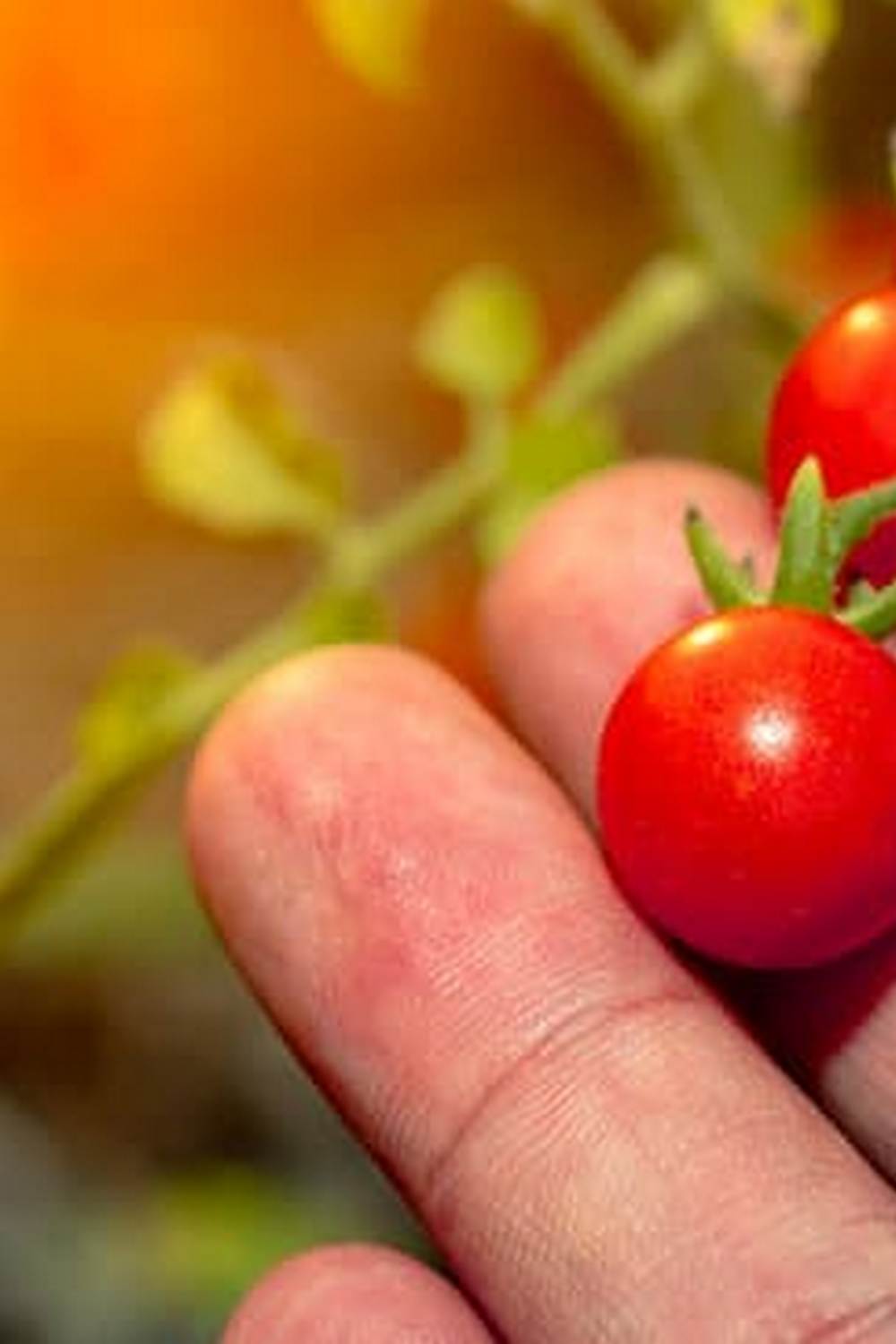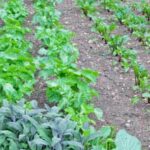As we enter the month of September, it’s time to shift our focus from the hot summer months to the cooler and crisper days of fall. September marks a transitional period in the gardening calendar, with new opportunities for planting and tending to our vegetable gardens.
In this article, we will explore some valuable tips for successful September vegetable gardening, including the best vegetables to plant, soil preparation, pest control, watering techniques, harvesting and storage methods, seasonal maintenance, and tips for extending the growing season. Whether you’re an experienced gardener or just starting out, these suggestions will help you make the most of your fall vegetable garden.
Now that autumn is approaching, it’s essential to consider which vegetables thrive in cooler temperatures and shorter daylight hours. Planting the right crops now can lead to a bountiful harvest in the coming months.
Additionally, with proper soil preparation and maintenance, you can ensure that your garden beds are ready for optimal growth during the fall season. By implementing effective pest control strategies and managing watering and moisture levels, you can protect your plants from potential threats and provide them with the conditions they need to thrive.
As we bid farewell to summer and embrace the changing seasons, there are key tasks and projects to address in order to prepare our gardens for colder weather. Furthermore, by employing techniques for extending the growing season into autumn and beyond, you may be able to continue enjoying fresh produce from your garden well into the coming months. Follow along as we delve into these important aspects of September vegetable gardening for a successful season ahead.
Best Vegetables to Plant in September
As the seasons change and September brings cooler temperatures, it’s time to shift our focus to fall vegetable gardening. While some may think of the end of summer as the end of the gardening season, there are actually many vegetables that thrive in the autumn months. Planting in September can yield a bountiful harvest well into the fall and even winter months.
One of the best vegetables to plant in September is leafy greens such as lettuce, kale, and spinach. These cool-season crops thrive in cooler temperatures and can withstand light frosts. Root vegetables like carrots, radishes, and beets also do well when planted in September, as their flavors become sweeter with cooler weather. Additionally, crops like broccoli, cauliflower, and Brussels sprouts have a long growing period and can be started in September for a late fall or early winter harvest.
In addition to these vegetables that are ideal for fall planting, it’s important to consider your specific climate and growing zone when choosing what to plant. Consulting with local nurseries or agricultural extension offices can provide valuable information on what will grow best in your area during the autumn months. With proper care and attention, September vegetable gardening can result in an abundant harvest that extends well into the cooler seasons.
| Vegetable | Planting Guidelines |
|---|---|
| Lettuce | Plant in well-drained soil with plenty of organic matter. Regularly water to keep soil consistently moist. |
| Carrots | Sow seeds directly into well-prepared soil with good drainage. Thin seedlings after they have sprouted. |
| Broccoli | Start seeds indoors to transplant later or sow directly outdoors. Provide consistent moisture throughout the growing season. |
Soil Preparation and Maintenance
As the summer slowly transitions into fall, it’s essential to prepare and maintain the soil in your vegetable garden for the upcoming season. Here are some tips for ensuring that your soil is ready to support the growth of fall vegetables:
- Remove any leftover debris: Clear out any remaining plant debris from the summer season, as it can harbor pests and diseases that may affect your fall crops.
- Amend the soil: Test the pH level of your soil and add any necessary amendments to ensure that it meets the requirements of the vegetables you plan to plant. Consider adding organic matter such as compost or aged manure to improve soil structure and fertility.
- Till the soil: Use a garden tiller or hand tools to loosen and aerate the soil, which will promote better root growth for your fall crops.
Additionally, implementing crop rotation can help prevent disease buildup and nutrient depletion in the soil. Rotate your crops by planting different types of vegetables in areas where specific ones were grown in previous seasons. This practice helps maintain soil health and reduces pest problems.
Finally, consider covering your garden beds with a thick layer of mulch to protect the soil from erosion, conserve moisture, and moderate temperature fluctuations during September vegetable gardening. By taking these steps to prepare and maintain your garden’s soil, you’ll lay a solid foundation for a successful fall harvest. Remember that proper care for your garden’s earth ensures productive plants throughout future growing seasons too.
Pest Control
As September brings cooler temperatures and the changing of the seasons, it also brings a new set of challenges for gardeners. One of the most significant challenges is dealing with pests that thrive in the fall. However, there are several strategies for preventing and controlling pests in the fall garden that can help to ensure a successful harvest.
Here are some effective pest control strategies for your fall garden:
1. Companion planting: Planting certain vegetables and herbs together can help to repel pests and attract beneficial insects. For example, planting marigolds alongside your vegetables can deter nematodes, while attracting ladybugs that feed on aphids.
2. Natural predators: Encouraging natural predators like ladybugs, lacewings, and predatory wasps can help keep pest populations in check. Consider purchasing or attracting these beneficial insects to your garden.
3. Row covers: Using row covers can protect your plants from flying pests such as cabbage moths and carrot rust flies. These covers create a physical barrier between the pests and your plants, reducing the need for chemical pesticides.
By implementing these pest control strategies, you can minimize the damage caused by unwanted pests and ensure a bountiful fall harvest. Remember to regularly inspect your plants for signs of pest damage and take action promptly to prevent infestations from becoming unmanageable during this crucial period of September vegetable gardening tips.
Watering and Moisture Management
As the weather begins to cool and the days shorten, proper watering and moisture management become essential for a successful fall vegetable garden. In September, it’s important to adjust your watering schedule to accommodate the changing environmental conditions. Here are some tips for ensuring your fall garden receives the proper moisture it needs to thrive.
Monitor Soil Moisture
With the fluctuating temperatures in September, it’s crucial to monitor the moisture levels in your soil. Use a moisture meter or simply dig a few inches into the soil with your finger to determine if watering is necessary. Keep in mind that while cooler temperatures may reduce evaporation, plants still need adequate moisture for healthy growth.
Watering Techniques
When it comes to watering in September, it’s best to water deeply and less frequently. This encourages plant roots to grow downward in search of water, creating a stronger root system. Additionally, consider watering in the morning when the temperatures are cooler and sun exposure is less intense. This reduces water loss through evaporation and allows foliage to dry before nightfall, reducing the risk of fungal diseases.
Drought-Tolerant Varieties
Consider planting drought-tolerant vegetable varieties that require less water as fall progresses. These varieties can withstand periods of dryness without compromising their health and productivity. Drought-tolerant vegetables such as kale, spinach, and Swiss chard are excellent choices for fall gardening.
By implementing these September vegetable gardening tips for proper watering and moisture management, you can ensure that your fall garden remains healthy and vibrant throughout the growing season. Adjusting your watering practices based on environmental cues and plant needs will lead to a bountiful harvest of delicious fall vegetables.
Harvesting and Storage
As the temperatures begin to cool and the days become shorter, September is a great time to start harvesting the vegetables that have been growing throughout the summer months. Knowing when and how to harvest fall vegetables is essential for ensuring that they reach their full flavor potential and storing them properly for future use. Here are some helpful tips for harvesting and storing fall vegetables:
Timing Is Everything
One of the keys to successful vegetable harvesting in September is timing. Different vegetables have different maturity periods, so it’s important to know when each type of vegetable is at its peak for harvest. For example, root vegetables like carrots and beets can be harvested as soon as they reach a desirable size, while winter squash should be left on the vine until the skin has hardened.
Harvesting Techniques
When it comes to harvesting fall vegetables, it’s important to use the proper techniques to avoid damaging the plants or compromising their flavor. Using pruning shears or a sharp knife is recommended for cutting leafy greens like kale or lettuce, while root vegetables should be gently pulled from the soil by hand. Be sure to handle delicate produce like tomatoes with care to prevent bruising.
Proper Storage
After harvesting your fall vegetables, it’s crucial to store them properly in order to preserve their freshness and flavor. Root vegetables like potatoes, carrots, and onions should be stored in a cool, dark place with good ventilation to prevent mold and rot.
Leafy greens can be placed in plastic bags with paper towels to absorb excess moisture before refrigerating. Winter squash and pumpkins should be cured in a warm, dry area for two weeks before being moved to a cool storage location.
With these tips for harvesting and storing fall vegetables in mind, you can make the most of your autumn garden bounty and enjoy fresh produce well into the colder months. By understanding each vegetable’s optimal harvest time, using proper techniques for picking and handling, and implementing appropriate storage methods, you can prolong the life of your homegrown veggies and savor their flavors throughout the season.
Seasonal Maintenance
As the summer season comes to a close and we welcome the changing of the seasons, September is a crucial month for preparing our vegetable gardens for the colder months ahead. Seasonal maintenance is essential to ensure that our gardens are ready to withstand the upcoming fall and winter conditions. In this section, we will discuss the tasks and projects that are important to undertake in order to prepare the garden for the colder months.
One important task for seasonal maintenance in September is to clear out any spent crops or plants from the summer season. Removing these plants will not only tidy up the garden but also prevent any diseases or pests from lingering and affecting new plantings. Additionally, it provides an opportunity to amend the soil with organic matter such as compost or aged manure, which will replenish nutrients and improve soil structure in preparation for fall planting.
Another essential project for seasonal maintenance is to assess and repair any garden structures, such as trellises, stakes, or fencing. Ensuring that these structures are sturdy and stable will be important as they support new plantings such as fall vegetables or cover crops. It is also a good time to clean and store garden tools properly, so they are in good condition for use during fall and winter gardening tasks.
Furthermore, September is a great time to start planning for next year’s garden by taking stock of what worked well this year and what can be improved upon. This includes evaluating plant performance, noting any pest or disease issues, and considering crop rotation strategies for next year’s plantings.
| Seasonal Maintenance Tasks | Importance |
|---|---|
| Clear out spent crops | Prevents diseases and pests from lingering |
| Amend soil with compost or aged manure | Replenishes nutrients and improves soil structure |
| Assess and repair garden structures | Ensures stability for supporting new plantings |
Tips for Extending the Growing Season
As we welcome the arrival of September and the changing of the seasons, it’s important for vegetable gardeners to adapt their practices to best suit the cooler temperatures and shorter daylight hours. By following the best vegetables to plant in September, preparing and maintaining the soil, controlling pests, managing watering and moisture, harvesting and storage, seasonal maintenance, and extending the growing season, gardeners can ensure a successful harvest well into the fall months.
By implementing these September vegetable gardening tips, gardeners can make the most of this transitional time and enjoy a bountiful harvest of crisp fall produce. Taking proactive steps in soil preparation and maintenance, as well as implementing strategies for pest control and proper watering techniques can help ensure that plants continue to thrive even as autumn sets in. Harvesting at the right time and utilizing proper storage techniques will further extend the enjoyment of homegrown produce throughout the fall season.
Furthermore, seasonal maintenance tasks should not be overlooked, ensuring that gardens are prepared for the colder months ahead. By staying on top of these tasks now, gardeners can set themselves up for success when it comes time to start planting again in spring.
And with techniques for extending the growing season through methods such as using row covers or cold frames, it’s possible to continue enjoying fresh vegetables well into late fall or even early winter. With these September vegetable gardening tips in mind, gardeners are well-equipped to navigate this seasonal transition with ease and success.
Frequently Asked Questions
What Vegetables Should I Plant in September?
In September, you can plant vegetables like radishes, spinach, lettuce, and other leafy greens. These cool-season vegetables thrive in the lower temperatures of fall and can still be harvested before winter sets in.
Is September Too Late to Plant Vegetables?
September is not too late to plant certain vegetables, especially those that are quick-growing or cold-tolerant. While it may be too late for some warm-season crops, you can still successfully grow a variety of vegetables in September for a fall harvest.
Can I Plant Peppers in September?
Yes, you can plant peppers in September if you live in a climate with a longer growing season or if you use containers that can be moved indoors once temperatures drop. Peppers take time to mature, so starting them in September may yield a smaller harvest than if they were planted earlier.

If you’re looking to get into vegetable gardening, or are just looking for some tips on how to make your current garden better, then you’ve come to the right place! My name is Ethel and I have been gardening for years. In this blog, I’m going to share with you some of my best tips on how to create a successful vegetable garden.





